Art & Exhibitions
Revealed: The Sensational Lives of 6 Overlooked British Women Artists
A sweeping exhibition at London's Tate Britain spotlights the U.K.'s great women artists that history forgot.
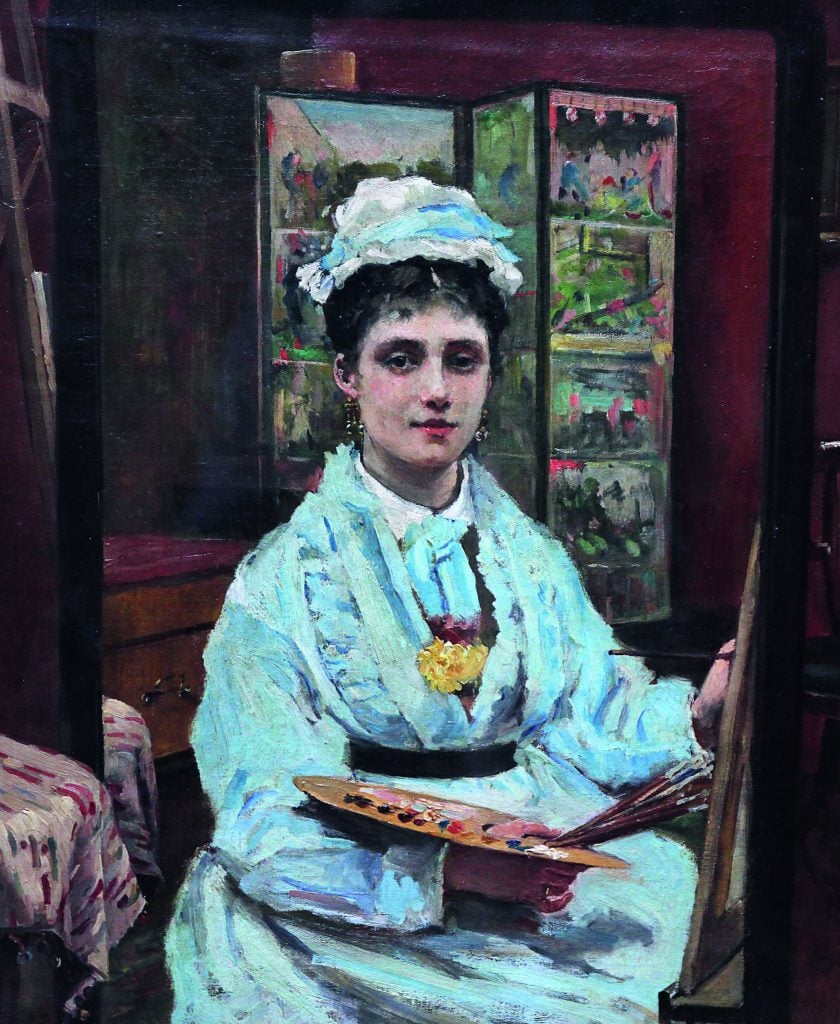
A sweeping exhibition at London's Tate Britain spotlights the U.K.'s great women artists that history forgot.

Jo Lawson-Tancred

Although many women artists gained recognition in their lifetimes, their names have too often fallen into obscurity as art historians privileged the achievements of their male peers. The exhibition “Now You See Us: Women Artists in Britain 1520–1920” at Tate Britain in London brings together paintings by over 100 artists with a connection to the U.K., debunking the widely held assumption that there were very few significant women artists before the 20th century.
Two women artists, Angelica Kauffman and Mary Moser, for example, were among the founding members of the Royal Academy of Arts in London in 1768. In the centuries since, women have continued to work hard to forge impressive careers against the odds.
Examples of rampant sexism are rife throughout the exhibition. In 1770, the Royal Academy banned many mediums typically associated with women artists, including needle-work and shell-work. Then-president Joshua Reynolds spoke dismissively of work in pastel as “just what ladies do when they paint for their own amusement.”
When one artist, Mary Black, asked to be paid for her 1764 portrait of physician Messenger Monsey, he threatened that her expectation of a fee could damage her reputation. He referred to her as a “slut” in a letter to his cousin.
It is also too often assumed that women of the past had only dull and contained existences. From romantic affairs with a U.S. founding father, to brave legal battles, living in a ménage-à-trois, and documenting the Nuremberg trials, these women artists often led unusual lives and had a unique perspective to share with their audiences. Here are six standout artists from the show who lived particularly storied lives.
Maria Cosway (1760–1838)
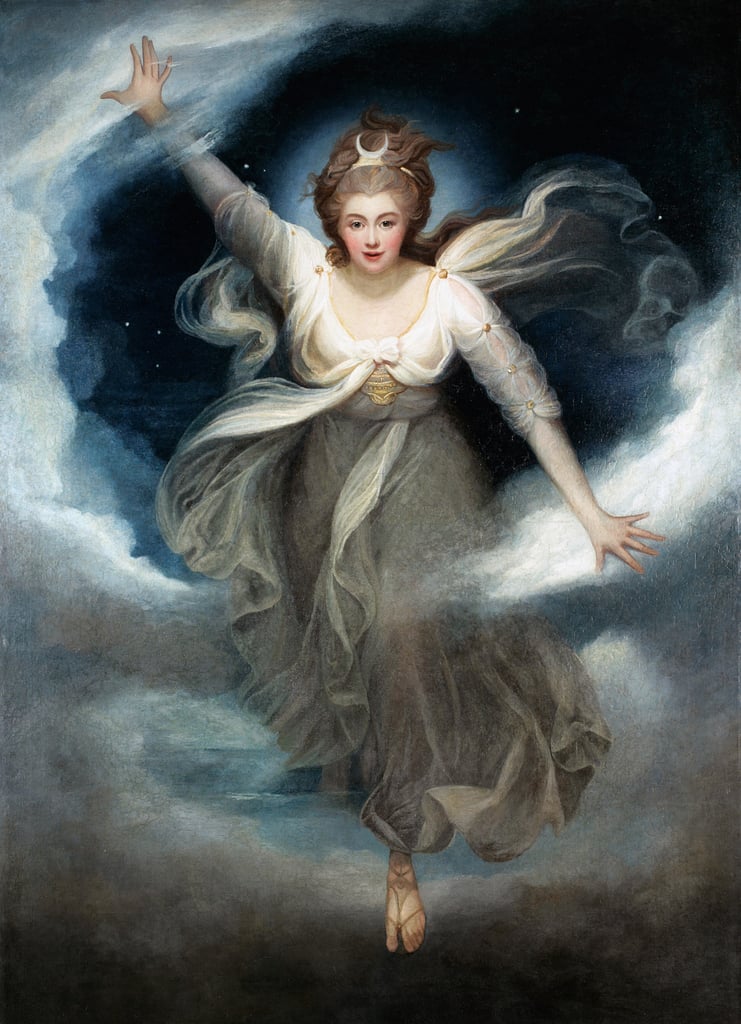
Maria Cosway, Georgiana as Cynthia from Spenser’s “Faerie Queene” (1781-82). Reproduced by permission of Chatsworth Settlement Trustees.
Born in Florence in 1760 to an English father and an Italian mother, Maria Cosway (née Hadfield) narrowly escaped becoming the fifth victim of her family’s murderous nursemaid, who was later imprisoned. Showing natural artistic talents from a young age, she studied under the artists Violante Cerroti and Johann Zoffany in Florence and Pompeo Batoni in Rome.
Shortly after moving to London in her late teens, Cosway debuted her work at the Royal Academy of Arts in 1781 and, over the following two decades, would exhibit some 30 more paintings. She gained critical acclaim for her inventive mythological scenes like Georgiana as Cynthia from Spenser’s “Faerie Queene,” a portrait of Georgiana Cavendish, Duchess of Devonshire.
Cosway changed her name after marrying the miniaturist Richard Cosway, who initially tried to prevent her from painting professionally. She later speculated that, without this interference to her career, she could have “made a better painter, but left to myself by degrees, instead of improving, I lost what I brought from Italy of my early studies.”
Despite these setbacks, Cosway kept painting and maintained strong connections with the continent. Her friend, the Neo-Classical painter Jacques-Louis David, once said of her engraving The Hours: “One could not create a more ingenious or more natural poetic work.” Later in life, she had a brief affair with founding father and future U.S., president Thomas Jefferson, with whom she bonded over their shared love of the arts.
Florence Claxton (1838–1920)
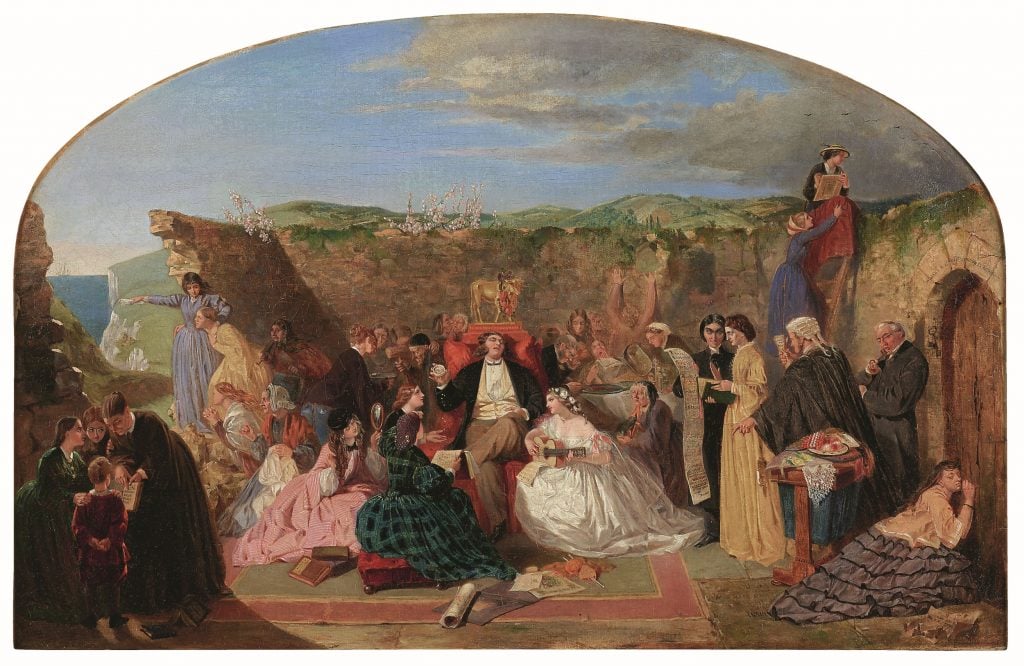
Florence Claxton, Woman’s Work, A Medley (1861). Photo courtesy of Tate.
Named after the city where she was born in 1838 to English parents, Florence Claxton’s childhood was spent moving between continents. First her family settled in Australia before moving to India, Sri Lanka, and later Egypt. By the time she moved to London, Claxton was around 20 years old. Inevitably, she was something of an outsider to English society and, therefore, able to see it with a keen satirical eye.
Having been trained by her father, an artist, Claxton made a living as an illustrator and started to gain recognition after exhibiting Scenes from the Life of a Female Artist (1858), a series of six humorous ink drawings that would establish her interest in documenting the experiences of women, always with a light, humorous touch. The Choice of Paris: An Idyll (1860) took aim at the Pre-Raphaelite Brotherhood, densely merging together many parodies of specific paintings by male artists to undermine the patriarchal culture of the 19th century art world. In 1870, Claxton wrote and illustrated the comic book The Adventures of a Woman in Search of Her Rights.
The painting Women’s Work: A Medley (1861) is thought to be a rebuttal to Ford Madox Brown’s painting Work, which only focused on examples of men laboring. At the center a young, well-dressed, evidently affluent man lies back on his chair and the golden calf above his head is a symbol that marks him out as a false idol. Around him, some women clamor to win his favor, others engage in dreary domestic tasks, while just a few attempt escape. The work critiques the limited opportunities for professional advancement for Victorian women, forcing them to be reliant on men. Most critics disliked the painting, with one accusing it of “sermonizing on social topics” that were “not within the province of art.”
In 1859, Claxton signed a petition to allow women to join the Royal Academy of Arts and the first woman student, Laura Herford, was admitted a year later. The first woman member of the academy would not be elected until 1922, two years after Claxton died.
Louise Jopling (1843–1933)
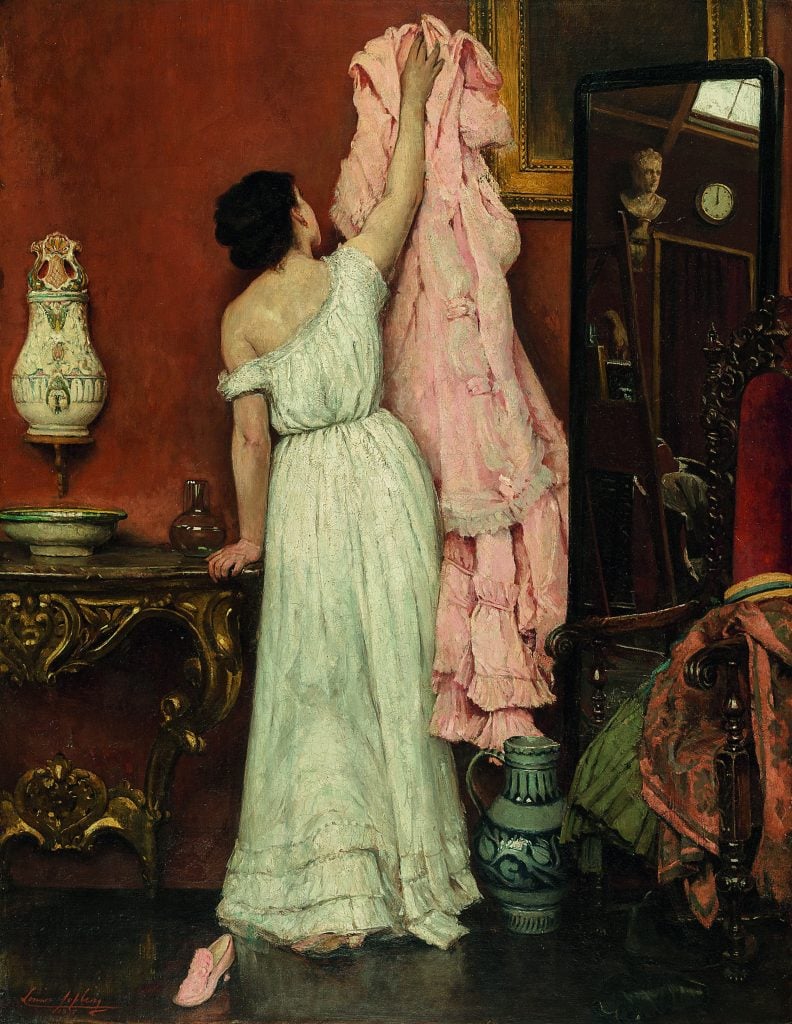
Louise Jopling, A Modern Cinderella (1875). Photo courtesy Tate.
One of the most prominent female artists of the Victorian era, Louise Jopling (née Goode) was born in Manchester in 1843. Through her first of three husbands she met the French socialite and painter Baroness de Rothschild, who encouraged her to study art in Paris. She began exhibiting at the Salon in 1868, later showing at the Royal Academy of Arts in London, the Philadelphia Exposition in 1876, and the World’s Columbian Exposition in Chicago in 1893.
Admired for her portraits of notable sitters, Jopling worked out of a studio in London’s Chelsea that is captured in A Modern Cinderella. A model takes of a smart dress at the end of a painting session and Jopling’s easel can be spotted reflected in the mirror.
During her marriage to Joseph Middleton Jopling, an artist for the magazine Vanity Fair, she was the family’s main breadwinner and had to maintain an exhaustingly high output. Jopling could also expect to earn less than her male peers. In 1883, she lost out on a commission for which she hoped to be paid 150 guineas. It went instead to John Everett Millais, who was paid 1,000 guineas for the same gig.
Jopling’s social circle quickly grew to include figures like Oscar Wilde, actress Ellen Terry, and Whistler, who also painted her. As well as becoming a regular at glamorous parties on the London social scene, Jopling was a passionate supporter of the women’s suffrage movement. She set up her own painting school for women where the students were allowed to work directly from live nude models, a radical act at a time when other schools only allowed women to draw partially clothed models.
Edmonia Lewis (1844–1907)
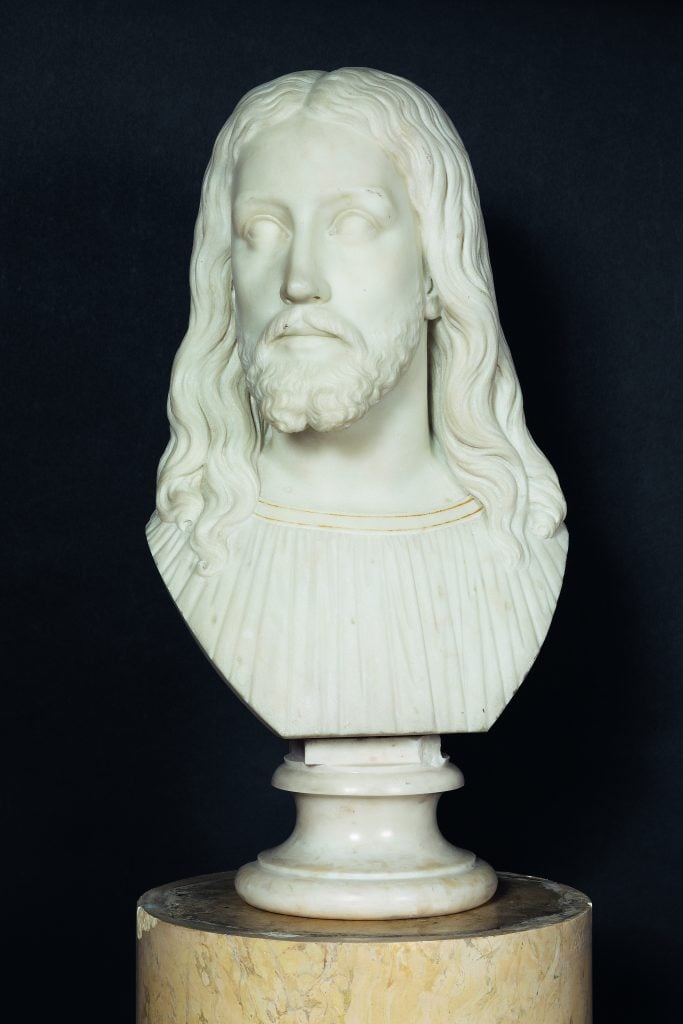
Edmonia Lewis, Bust of Christ (1870). Photo courtesy The Bute Collection at Mount Stuart.
Edmonia Lewis, also known as “Wildfire,” was born in 1844 in New York state to an African American father and a Native American (Ojibwe) mother. She is celebrated as one of the first Black women artists to gain international renown.
Orphaned at a young age, Lewis recalled a “wandering” childhood spent “fishing and swimming… and making moccasins.” When she attended school, she was “declared to be wild–they could do nothing with me.” She later enrolled at Oberlin, one of the first U.S. colleges to accept Black students, though she experienced racism and sexism throughout her time there.
In one case, she was charged with attempting to poison two friends who she had served spiced wine before they fell ill. She was attacked by unknown assailants before standing trial, where she was successfully defended by Ohio’s first Black lawyer John Mercer Langston. Eventually, Lewis dropped out of Oberlin but was posthumously awarded her degree in 2022.
Lewis began her career in Boston sculpting prominent abolitionists. In her early 20s, she moved to Rome where she became part of a vibrant community of artists and expats and would remain for two decades.
“I was practically driven to Rome in order to obtain the opportunities for art culture, and to find a social atmosphere where I was not constantly reminded of my color,” she later recalled. “The land of liberty had no room for a colored sculptor.”
Lewis began sculpting in the Neoclassical style. The marble bust of Jesus Christ on view at Tate Britain was produced for the Scottish aristocrat and antiquarian John Crichton-Stuart, Third Marquess of Bute. In 1877, she made a portrait of ex-U.S. president Ulysses S. Grant. Lewis moved to Paris in around 1896 and then, in 1901, to London, where she spent her final years.
Clare Atwood (1866–1962)
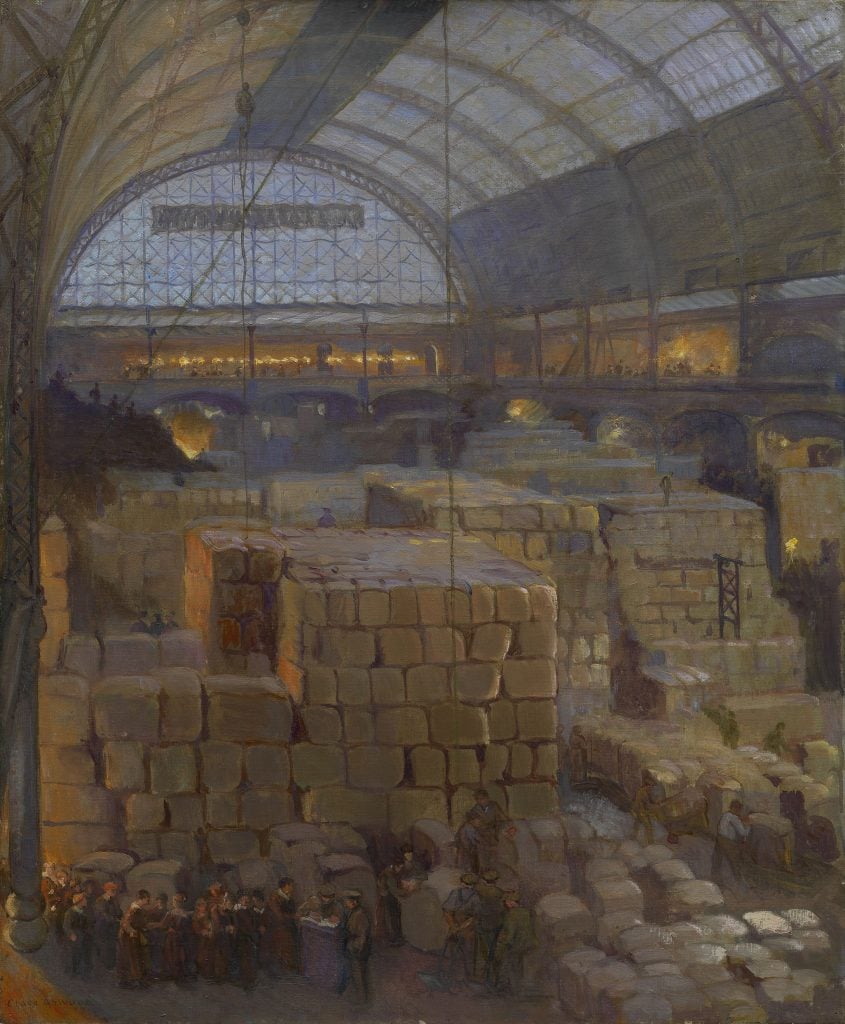
Clare Atwood, Olympia in War Time Royal Army Clothing Depot, 1918. Photo courtesy Imperial War Museum, London.
Born in London in 1866, Clare Atwood is known for painting a great range of subjects that include portraits, still lifes, landscapes, and interior scenes in large, public spaces. During the First World War, she painted war scenes for the Canadian Government and later documented the daily activities of the Women’s Voluntary Service in a group of works commissioned by the Imperial War Museum.
One of these, Olympia in War Time: Royal Army Clothing Depot, 1918, shows a bustle of activity in a disused train station as workers are dwarfed by towering bundles of army uniforms.
Atwood lived openly as a lesbian who sometimes went by the name “Tony.” She lived with two partners, the writer Christabel “Chris” Marshall and the theater producer Edith “Edy” Craig, in Kent, and the trio’s social circle included many artists and writers. Their friend, the sculptor Una Troubridge, who was in a relationship with Marguerite “John” Radclyffe Hall, sometimes referred to them as “Edy and the boys.”
Laura Knight (1877–1970)
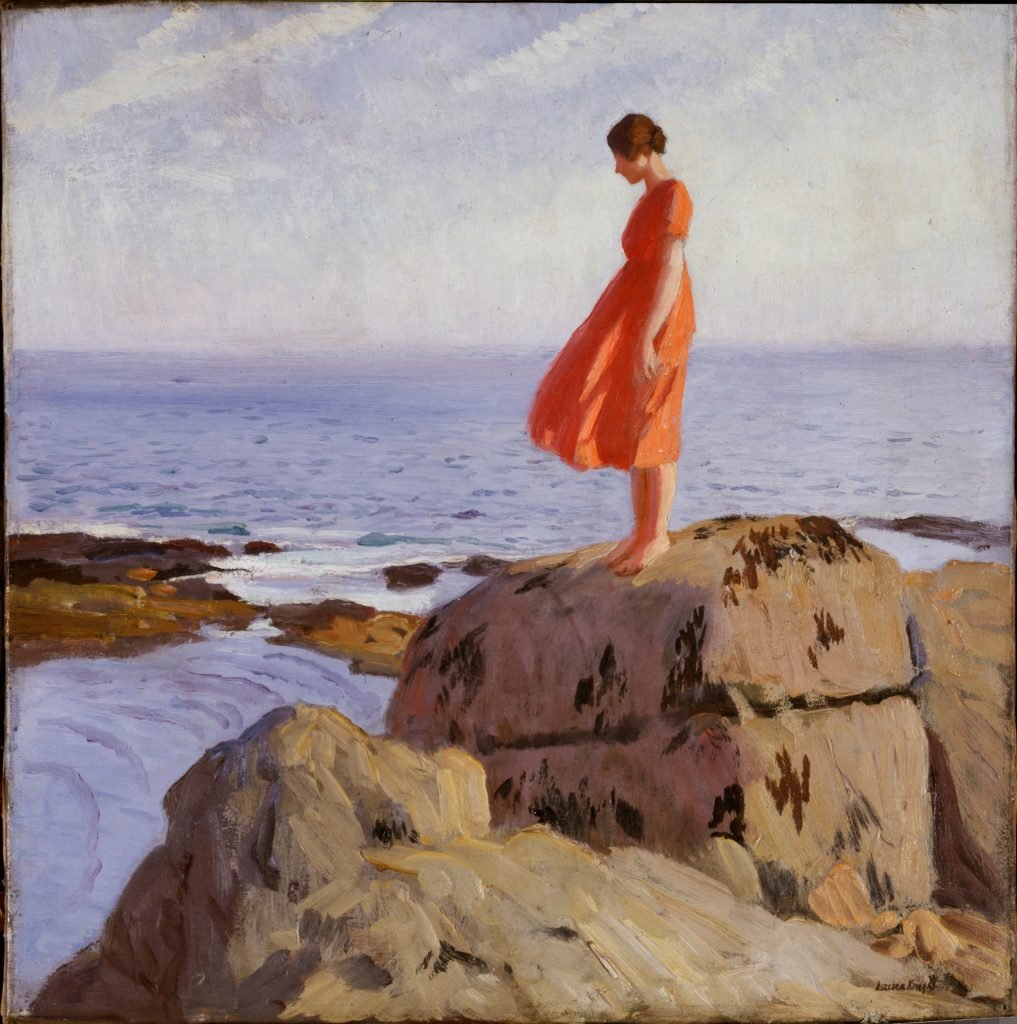
Laura Knight, A Dark Pool (1917). All rights reserved 2024 / Bridgeman Images, © Estate of Dame Laura Knight.
Born in England’s Midlands, Laura Knight (née Johnson) grew up in financial precarity after her father deserted her family. By the age of 13, she was enrolled at the Nottingham School of Art where her mother taught, but just two years later was forced to take over her mother’s job when she fell ill with cancer. Orphaned by her late teens, Knight continued to make a living through private tutoring and ended up marrying fellow student Harold Knight. The pair moved to Cornwall and joined an artists’ colony.
In 1913, frustrated by the expectation that women learn to draw from copying casts rather than live nude models, Knight produced Self-portrait with Nude. It was the first time a female artist was depicted painting a nude model. The bold work was well-received by some but rejected for an exhibition at the Royal Academy and labelled “vulgar” by a critic for The Daily Telegraph. The work is now held in the collection of the National Portrait Gallery.
Knight was drawn to subjects that were often overlooked by traditional portrait painters. While living briefly in Baltimore in 1926, she became friends with and depicted the nurse Pearl Johnson who took her to meetings for the emerging Civil Rights movement. During the 1930s, she befriended a group of travelers who she often painted in works like Old Gypsy Women (1938) and Gypsy Splendour (1939).
In 1946, Knight documented the Nuremberg trials for the War Artists’ Advisory Committee, from which her most famous painting contains a semi-fantastical scene in which Nazi war criminals are set against the burning ruins of a destroyed cityscape. Amazingly, Knight was the third woman to be elected as a member of the Royal Academy in 1936 and received their first retrospective for a woman artist in 1965.
“Now You See Us: Women Artists in Britain 1520-1920” is on view until October 13, 2024 at at Tate Britain, London.